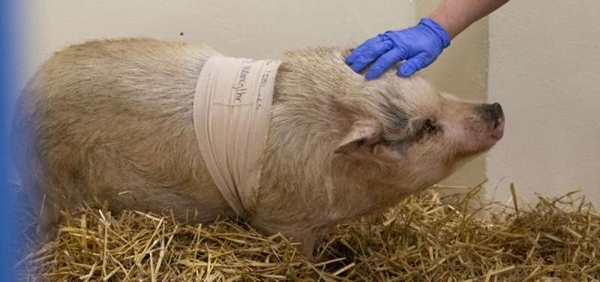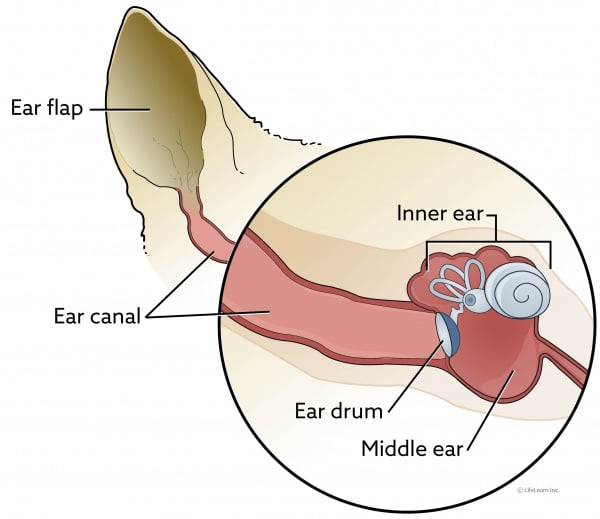A doctor from Oregon State University Veterinary Hospital has successfully performed the first known total ear canal ablation surgery on a pig with the help of 3D printing technology, Mohou.com has learned.
Dec. 28, 2022 - A doctor from Oregon State University Veterinary Hospital has successfully performed the first known total ear canal ablation surgery on a pig with the help of 3D printing technology, Mohou.com has learned.

△ Total ear canal ablation surgery on Ella using 3D printing technology
After the Dec. 19 surgery, Ella, a 3-year-old Vietnamese pot-bellied pig, is doing well and is recovering from the procedure at the Lois Bates Acheson Veterinary Teaching Building at Oregon State University's Carlson College of Veterinary Medicine.
Ella has been here for about two years after being rescued in California," said Jessica Vasselin of Morningside Farm Sanctuary, a nonprofit organization from Veneta, Oregon. She previously suffered from a chronic ear infection and was previously treated by doctors with antibiotics for months, but the treatment was not as effective as it could have been."
Complete ear canal ablation is the complete removal of the ear canal and is usually performed in dogs. But Dr. Katy Townsend, a veterinarian at Oregon State University, could not find any record of such a procedure being performed on pigs, where most of the external ear canal is located in the bony column, making the procedure difficult to access.
Although pig ears are very different from dog ears, the structure of the former has similarities to the human ear. So ownsend called her doctor for advice. Portland otolaryngologist Dr. Timothy Hullar operated on her five years ago to help treat a condition called otosclerosis, in which the bones of the inner ear fuse and cause deafness.

△TECA-BO stands for total ear canal ablation and herpetoplasty osteotomy, a procedure that involves complete removal of the ear canal and tympanic bulla (middle ear), leaving only the ear flap (auricle)
Townsend and Hullar soon collaborated. Meanwhile, Dr. Susanne Stieger-Vanegas, a veterinarian from Oregon State University, assisted them with diagnostic imaging and printing, and they were given a 3D printed skull based on the CT scan Ella received at Oregon State University. This helped the team think about and plan how to proceed with the surgery next.
Hullar, who also currently works at the Veterans Affairs Portland Healthcare System, said, "I look at ear scan reports at least five times a day, but CT of pigs is not common. Anatomical structures make sense to me; the outer ear of a pig is completely different from a human, but the inner and middle ears have some similarities."
Ella's ear infection caused her a great deal of pain, while neurological problems caused her to be unable to walk at any time due to loss of balance.

△Earlier in the day, surgeons used a 3D printed kidney model to develop a surgical plan and successfully perform the surgery. The model was so realistic that it not only contained the tumor to be removed, but also bled after being cut
The surgical team came up with four treatment plans in one breath - A, B, C and D - in order to adjust if any challenges arose during the surgery, but the surgery went so well that they ended up using only plan A. Less than half an hour after the surgery, Ella woke up and started eating her favorite snack of carrot chips.
After Townsend removed Ella's ear canal, Oregon State University's small animal internal medicine team removed a grape-sized mass from above her soft palate, which they believe may have blocked her eustachian tube.
With the help of 3D printing technology, we were able to use only one treatment option," Vasselin said. It's all gone very well and so far everyone is ecstatic about the success. Everyone thinks it's a really cool procedure and they've learned a lot from it."
Hullar said the collaboration has helped him expand his horizons, and he thinks both human and animal doctors could benefit more from 3D printing technology. And, Townsend says she and Hullar hope to write up case reports for other doctors to learn from together.



